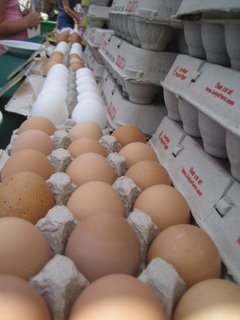 The egg has many uses. At Hands On Gourmet last week, we packed eggs for ricotta gnocchi, almond cakes, aiolis, tamago, and more.
The egg has many uses. At Hands On Gourmet last week, we packed eggs for ricotta gnocchi, almond cakes, aiolis, tamago, and more.
Whole eggs or egg yolks create structure in cookies. We use eggs to enrich, thicken, lighten, emulsify, and to flavor.
Egg proteins change when you heat them, whip them, or combine them with other ingredients. Although eggs provide strength, they are delicate and fragile and need to be handled properly.
The shell membrane protects the egg from the air and once cracked, the egg should be used soon afterwards or it should be covered with plastic. Also, when eggs and sugar are combined they should be used right away. If uncooked eggs and sugar sit together for too long the sugar will "burn" the eggs resulting in a texture change in the eggs.
Egg Whites
 Meringue
Meringue
There are three types of meringues that pastry chefs create. They all use the same ingredients: egg whites and sugar. These different types of meringues manipulate the egg whites and sugar differently to obtain a particular end result.
I use Swiss meringue to prepare coconut macaroons. Swiss meringue is made by heating egg whites and sugar over a water bath while whisking. I fold coconut into Swiss meringue and drop spoonfulls of this mix onto a pan to bake into golden coconut macaroons. They are more chewy than macaroons created with a French meringue.
I used Italian Meringue to create the Taj Mahal dessert.
Italian meringue is made by cooking sugar to the soft ball stage and then adding the sugar syrup in a slow, steady stream to the egg whites while whisking. Italian meringue is ready to eat after it is whipped with the sugar syrup. This meringue is used for baked alaskas and lemon meringue pies. Pastry chefs often torch Italian meringue to create a nice toasted flavor. Marshmallows are made from Italian meringe mixed with gelatine and vanilla. 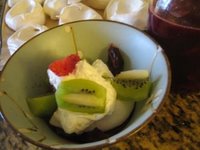 French meringue is made by whisking egg whites and slowly adding sugar to the whites as they mix. The French meringue is usually baked at a low temperature to create goodies like Pavlova and French macaroons.
French meringue is made by whisking egg whites and slowly adding sugar to the whites as they mix. The French meringue is usually baked at a low temperature to create goodies like Pavlova and French macaroons.
There are precautions that need to be followed in order to be successful in creating a successful meringue.
1. Always use clean utensils free of dust, flour, oil, etc.. and make sure that the whites do not contain any part of the yolk (this will prevent the whites to whip up to a nice volume).
2. Once the whites reach the soft peak stage, add the sugar a little at a time in a slow stream. (this rule is for the Italian and French meringues) Egg's protein is more elastic and will create more tiny air bubbles when at room temp.
3. Use room temperature egg whites. Egg whites will produce more volume when whipped at room temperature. Also, older egg whites (seperated the day before) whip up better than more recently cracked whites.
4. sing to your egg whites as they whip. Egg whites love melody and sweet sounds.
Egg protiens are shaped like cooked noodles, long and curled and bundled up. Egg white protiens become partially "unbundled" when they are whipped or cooked and they wrap around the air bubbles that are created by whipping. The proteins in egg whites contain two types of amino acids, hydropholic (acids that are atracted to water) and hydrophobic (acids that are afraid of water). Egg whites are comprised of almost 90% water and a little more than 10% protein. When an egg protien is wrapped around an air particle in a meringue, the hydrophobic part is attracted to the air and the hydropholic part is attracted to the water in the egg white. This transfer of energy is what gives the meringue its structure. These delicate air pockets are fragile and can be broken and deflated if other ingredients are not added with care.
Egg Yolks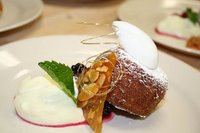 Egg yolks were part of the orange soda sabayon recipe that participants in recent Hands On Gourmet events have prepared. Chef Stephen has a great recipe for deviled eggs. I think he tops his little treasures with pickled yellow bell peppers. They glisten on top of the flavorful egg yolk mixture that fills the boiled egg white "cup". It is impossible to eat just one. Egg yolks are also used to make homemade mayonaise. Egg yolks work as an emulsifier because they contain lecethin and they also have hydropholic and hydrophobic amino acids, as in the egg white. These emulsifiers allow for some ingredients to combine that would not be able to combine on there own like oil and vinegar.
Egg yolks were part of the orange soda sabayon recipe that participants in recent Hands On Gourmet events have prepared. Chef Stephen has a great recipe for deviled eggs. I think he tops his little treasures with pickled yellow bell peppers. They glisten on top of the flavorful egg yolk mixture that fills the boiled egg white "cup". It is impossible to eat just one. Egg yolks are also used to make homemade mayonaise. Egg yolks work as an emulsifier because they contain lecethin and they also have hydropholic and hydrophobic amino acids, as in the egg white. These emulsifiers allow for some ingredients to combine that would not be able to combine on there own like oil and vinegar.
Custard 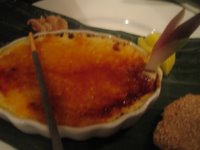 I used egg yolks in the young ginger creme brulee I baked last week. The proper cooking time is essential in custards. Overcooked eggs create curdling and tough custards. Custards are often cooked at low temperatures or in a water bath. This helps slow down the cooking process and lengthens the window of time between being done and becoming overcooked. It also provides a more equal distribution of heat. With a waterbath, where the water is about the same temperature as the custard base, the entire contents of the pan will come up to heat at a steady rate. Without the water bath, the outside of the custard risks being heated at a faster rate than the inside. An oven set at a higher temperature is also likely to bake the outside of the custard faster than the center. Like meat, custards will also continue to bake from carryover cooking after they are removed from the oven. So to create a silky texture in custards, they should be removed from the oven before they are completely set.
I used egg yolks in the young ginger creme brulee I baked last week. The proper cooking time is essential in custards. Overcooked eggs create curdling and tough custards. Custards are often cooked at low temperatures or in a water bath. This helps slow down the cooking process and lengthens the window of time between being done and becoming overcooked. It also provides a more equal distribution of heat. With a waterbath, where the water is about the same temperature as the custard base, the entire contents of the pan will come up to heat at a steady rate. Without the water bath, the outside of the custard risks being heated at a faster rate than the inside. An oven set at a higher temperature is also likely to bake the outside of the custard faster than the center. Like meat, custards will also continue to bake from carryover cooking after they are removed from the oven. So to create a silky texture in custards, they should be removed from the oven before they are completely set.
Century Egg
1000 year eggs are eggs that have been left in a mixture of paddy, tea leaves, rice straw, lime, clay, saltpetre, and aromatics for a few months. This produces a jelly like black translucent egg white with a rich flavorful egg yolk that is like an aged cheese. I learned a technique for creating tea marbled eggs that look a little like 1000 year eggs from Mu of Mu Du Noodles in Santa Fe. The flavor is different, but it could be an alternative to 1000 year eggs if you are not keen on eating eggs that are a few months old. Hard boil fresh eggs and then tap and roll them lightly on a table to slightly crack the shell, leaving the shell still covering the egg. Soak the egg in a brew of strong black tea, star anise and soy sauce for just under an hour. When you remove the shell it will be beautifully marbled and tasty. We also used to tempura whole hard boiled eggs at Mu Du Noodles.
Which came first, the chicken or the egg?
Tune: Omelette au pastis by Fabulous Trobadors from the On the Linha Imaginot album
See Eggs in action in the video for Omelette au Pastis
Tune: Chicken Talk by Yma Sumac
Tune: The Stolen Chicken by Ebenezer Calender & His Maringar Band. Ebenezer Calender popularized the Palm Wine Music in West Africa and was influenced by Calypso from Trinidad. Palm Wine music has influenced other guitar based West African music like High Life and Soukous.
Tune: Chicken Rhythm is a cut by Soul Cocina favorite Slim Gallard.
Tune: C-H-I-C-K-E-N Spells Chicken by The McGee Brothers. Sam McGee on Guitar and Kirk McGee on Fiddle. They played on the original Grand Ole Opry in 1925 when it was called WSM Barn Dance Their band called The Fruit Jar Drinkers used to close each show because the creators wanted to end the show with "red hot fiddle playin'" As the Fruit Jar Drinkers they played some great food songs like Rabbit in the pea patch and Bake That Chicken Pie Kirk also played with Bill Monroe in the 50's
This song was featured in the record geek soundtrack Ghost World
Tune: Chicken You Can Roast Behind The Moon by Frank Stokes from the Creator of The Memphis Blues CD
Egg poetry: Eggs by Daiela Gioseffi
Tune: Egg Suckin' Dog by Johnny Cash
Tune: A Huevo from a mix CD from Chiapas. Not sure who the artist is.
Tuesday, August 29, 2006
Magic Eggs
Subscribe to:
Post Comments (Atom)
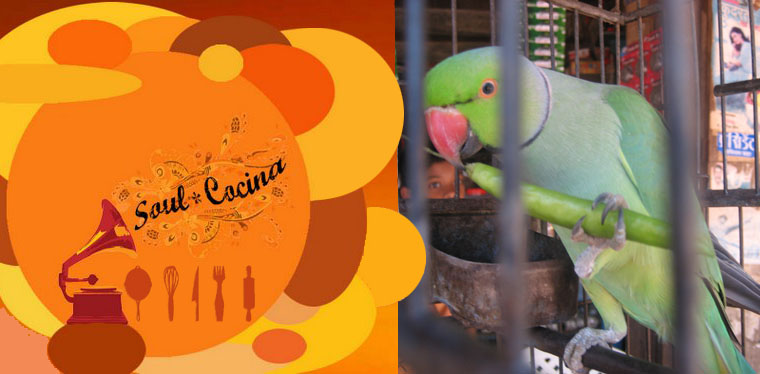
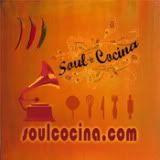




2 comments:
this is brilliant work u hav done and it has really helped me thanx
cheap nike shoes
nike sports shoes
puma running shoes
puma sneakers
ed hardy bags
ed hardy winter boots
ed hardy t shirts
nike shoes kids
nike women shoes
nike running shoes
ed hardy womens shoes
ed hardy t shirts for men
ed hardy mens jeans
wholesale nike shoes
nike shoes
nike tn dollar
nike air max 90
nike air max 2009
nike air max 2010
nike air max tn
puma cat
ed hardy mens shoes
ed hardy womens hoodies
ed hardy mens tees
puma shoes
ed hardy clothing us
ed hardy clothing
ed hardy men’s
ed hardy women’s
cheap ed hardy
ed hardy wholesale
ed hardy clothes
ed hardy shirts
Post a Comment